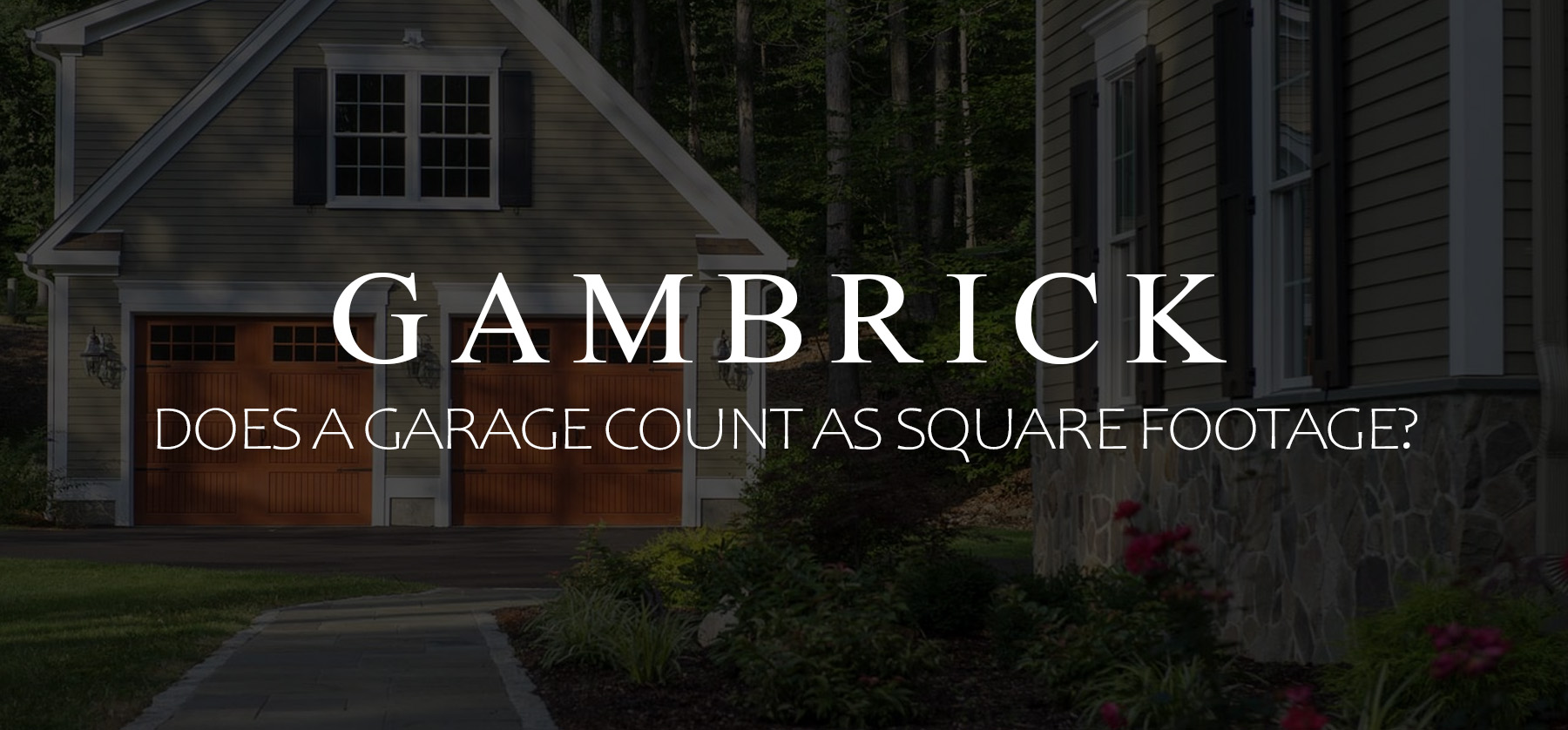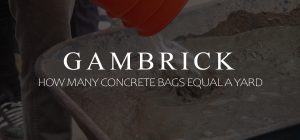Does A Garage Count As Square Footage?
A garage does not count as square footage of a house because it’s considered an unfinished space. This is similar to how attics and basement are treated. When you calculate a homes square footage, what that means is the amount of living space it has. Not unfinished space. And a garage counts as unfinished space unless it’s properly finished. A garage only counts towards the square footage of a home if it it has been legally converted into a living space. If you finish the garage, or even just partially finish it with an office, bathroom, bedroom, living room, etc. then that amount of square footage counts towards the total size of the home.
If you’re preparing to sell your house, calculating it’s accurate square footage is important. Square footage has a lot to do with the home’s value. Remember, living spaces like the kitchen, bathrooms, living room, bedrooms, closets, pantry, etc. all count towards square footage. The basement, attic and garage do not. Unless they’re finished and legally converted to living space.
When calculating the total square footage of a house, do not include the garage. Calculate the overall square footage by adding up the total area of all livable spaces inside the house. Unfinished garages are not livable spaces and don’t count towards square footage. However, if you have a finished garage with living space, include that area in the total square footage measurement
Here’s an exception. A garage does count as square footage when calculating lot coverage. This is different than square footage of living space. When you have to calculate the total lot coverage of the house, a.k.a. the footprint, you do calculate the garage even if it’s unfinished.
That’ the basic answer. Ahead we’ll go into more detail.
Do Garages Count Towards The Square Footage Of A House?
Garages do not count towards the square footage of a house if they are unfinished. However, if you properly finish them, the finished area does count as part of the home. When someone asks the square footage of a house, what they’re really asking is the square footage of living space. Many people also refer to this as conditioned space. If a room has heat and air conditioning, it’s probably living space.
Consider a home’s exterior doors. Generally there’s an exterior door separating the garage from the home. Even when the garage is attached to the house, there’s still a solid exterior grade door between the garage and home. This is because the garage is not technically part of the house, even when it’s attached.
Square footage is calculated for several reasons. If you plan on selling a house, doing a renovation, adding on, or are simply installing new flooring, you need accurate square footage measurements. This is important for ordering materials and calculating value.
When you measure the total square footage of a house, you should exclude the garage, attic and unfinished basement.
For a garage to count towards your home’s total square footage, you must transform it into a living space. If the garage has the rest of the house’s qualities and meets the living space definition, then you count it.
What Counts As Square Footage?
A home’s square footage measurement includes all living spaces within the house. The kitchen, bathrooms and bedrooms are all examples of living spaces.
Another way to look at living spaces are conditioned spaces. If a room has heat it’s probably living space.
Living spaces have to be built to building code and pass inspection. They typically require electricity, outlets every so many feet, switches, insulation, heating, safety and have ceiling height requirements. Generally you also have to list what the room is used for because different rooms have different codes. For example, a bedroom requires an egress window but a closet doesn’t. However, they’re both counted as living space.
Generally the ceiling height for a living space needs to be at least 7 feet high. There are some exceptions where the ceiling slopes down below 7 feet, for example in a finished attic. In this case, the high point has to be above the height requirement not the entire room.
Net livable square footage represents exactly how much space is fit for comfortable usage inside the home. This measurement excludes small areas like deep window frames. If you’re buying a house, make sure to ask for this measurement. If they don’t have it measure yourself. Sellers often pad the square footage number a bit to justify asking more for the house than it’s actually worth.
To calculate the square footage of a room you measure from the inside walls, not the outside. If you measure from the outside you have to adjust your measurement for the thickness of the walls. Here in New Jersey our exterior walls are 6 inches thick plus siding and drywall. Your measurements would be way off if you measured square footage of living space from the outside.
Lot Coverage Square Footage
There’s another way to calculate the square footage of a home and that’s lot coverage.
Many towns have regulations governing how much of your land you can build on. For example in my town it’s only 20%. That means if I have a 10,000 sq. ft. lot I can only build on 2,000 sq.ft. Garage square footage counts as part of this calculation.
Lot coverage generally only counts permanent structures. For example, most towns don’t count a shed built on blocks because it’s not a permanent structure.
When you determine the square footage of a house in terms of lot coverage, the garage and other auxiliary structures, like a shed, count too. This square footage has nothing to do with living space.
While livable square footage is a more specific measurement, floor area is more broad measurement. The floor area measurement represents the entire space that a building takes up. It’s also called the buildings footprint. This measurement helps understand the total building size related to the property’s size.
To determine a homes footprint square footage, you measure from the outside foundation walls. Do not measure from the siding or anything sticking out from the house, like a cantilever. Only measure what actually touches the ground. That’s why it’s called a footprint.
Upper floors don’t count. All you measure when calculating a home’s square foot footprint is what touches the ground.
Cantilevers and other things sticking out from the house don’t count towards a home’s footprint square footage, but they do count when determining setbacks.
Does A Garage Count As Part Of A Home’s Footprint?
Yes. Every structure permanently built on your land counts towards your footprint square footage. Permanent being a very important word here. In some areas, a movable shed built on blocks does not count, but a permanent shed built on a foundation does.
Some small garages are actually built like a large shed on blocks. If this is the case with your garage, it may not count towards your footprint. Call your local building department to find out.
This is the same exception with pools. An in-ground pool usually counts towards your home’s footprint, but an above-ground pool usually doesn’t. Why? Because you can take it apart and move it.
It doesn’t matter if the garage is attached to the home or detached. If it’s built on a foundation then it probably counts.
Garage’s are easy to convert to livable spaces because the foundation, walls and ceiling are already built for you. They also usually have electricity and can be added to the climate control system. Many also have insulation and come partially finished with drywall and at least a skim coat of spackle.
Is A Finished Garage Considered A Living Space?
Here in New Jersey, just making a room in the garage nice doesn’t necessarily count it as living space. For example, you could finish a shop or small office in the garage and not have it count as living space.
A finished garage is a living space if it meets the requirements of finished walls, flooring, climate control, safety and accessibility. Climate control being the big one. We call that a conditioned space. Once you condition the finished area with heat, AC and insulation, it becomes living space and counts towards the square footage of the home.
You also have to pass all the required township inspections to make a legal living space. Remember, just because you consider your finished garage space as square footage, it isn’t official until the town says so. It has to be inspected and deemed legal living space to count towards the home’s total square footage.
Finishing a garage is a great way to increase a house’s value without spending a lot of money. This is because the foundation, walls and roof are already done for you. All you have to do is finish the inside, make it livable and conditioned. This is cheaper than building an entire room from scratch.
Turning an unfinished garage into a livable space generally requires permits and inspections.
How Is The Square Footage Of A Home Calculated?
Remember, the square footage of a home is a calculation of it’s living space, not footprint. So you take a home’s square footage measurements from the inside.
The easiest way to calculate a homes square footage is to measure each room individually and then add the numbers together.
Measure each room’s length and width and multiply the two numbers together. Split large or oddly shaped rooms into smaller segments to make them more easy to measure. Finally, add up all of the multiplied measurements for the total square footage.
When calculating a homes square footage,you don’t count the thickness of interior walls. This is why you have to measure each room individually. If you simply measured the width and length of the house and multiplied them together, your number would be too big.
I always measure square footage with an old-fashioned measuring tape. However, there are modern tools like lasers that make things a little easier and more accurate.
What’s Considered In A Home’s Square Footage?
Only finished livable spaces are included in a home’s square footage. Finished spaces include any area that can be lived in throughout the year and are conditioned.To be a finished living space the room must pass all required building codes and be deemed safe to live in by modern standards.
Typically living spaces have the following attributes:
- Ceiling Height. Generally 7 feet or more is required.
- Finished Walls & Flooring.
- Heating and/or Air Conditioning.
- Insulation is usually required.
- Electricity.
Rooms that are typically included in a home’s square footage include:
- Living Room & Family Room
- Kitchen
- Dining Room
- Bathrooms
- Bedrooms
- Home Office
- Laundry Room
- Closets
- Sunrooms that are conditioned and meet living space code
- Bonus Rooms
- Finished Basement (if applicable)
Renovating unfinished spaces are not necessary, but they add to your home’s square footage and usually increase property value.
What’s Not Included In A Home’s Square Footage?
Unfinished areas are not included in the home’s square footage.
These typically include the following:
- Garage
- Attic
- Unfinished Basement
- Porches (In some cases they may be included if they’re conditioned)
- Sunrooms that are not conditioned and do not meet living space code
How To Have A Garage Count As Living Space
An appraisal is an unbiased opinion of a home’s value done by a professional third party. Not you or your realtor. Appraisals are required when you buy or sell a home and when you refinance. Lenders require appraisals so they don’t lend more money than a home is worth.
The square footage of your home is a factor an appraiser uses to calculate its value. Other factors include location, quality, bedrooms, bathrooms, amenities and the current real estate market. The size of a home is measured in square feet of living space, which does not include a garage.
The value of living space is higher than the value of a garage. For example, in an average market, living space may be worth $400 per square foot. While a garage is only worth around $100. Garages don’t add nearly the same amount of value as living space does.
If you want the garage to be counted as part of the square foot of the home you need to convert it into living space.
Your converted garage must meet building standards set by your municipality to qualify as living space and must pass inspection. It should also have the following:
- The same quality of construction as the rest of the house.
- Be conditioned.
- Accessible by a door or hallway without leaving the main house.
- A purpose. What will the new room be used for?
- Meet all building codes and pass inspection.
But remember, more living space usually means more taxes.
Does A Converted Garage Count As Square Footage?
A converted garage counts as square footage if building requirements are met and it’s been inspected. If building codes are not met and it has not been inspected, the answer is no. Just because you installed some new flooring and painted the walls doesn’t make a garage living space.
In order to convert a garage to living space properly you need a plan. The plan has to be approved by the town and all work must be inspected.
The first thing I do when converting a garage to living space is determine what the room will be used for. Building codes vary from room to room so it matter if the space will be an office, a living room or a bedroom.
Once you have a plan approved by the town, you can get started with the conversion. All applicable building inspections will be required like building, fire, insulation, electrical, plumbing, heating etc. Inspections will be based on the work needed to convert the garage.
When converting a garage into living space, the room is inspected and treated by the town just as if you were remodeling any other room in the house.
Once you do all the work, and pass all your inspections, the converted section of the garage is now counted as square footage. Keep in mind this may also factor into your taxes too.
Summary: Does A Garage Count As Square Footage?
A garage does not count as square footage of a house because it’s considered an unfinished space. This is similar to how attics and basement are treated. When you calculate a homes square footage, what that means is the amount of living space it has. Not unfinished space. And a garage counts as unfinished space unless it’s properly finished. A garage only counts towards the square footage of a home if it it has been legally converted into a living space. If you finish the garage, or even just partially finish it with an office, bathroom, bedroom, living room, etc. then that amount of square footage counts towards the total size of the home.
If you’re preparing to sell your house, calculating it’s accurate square footage is important. Square footage has a lot to do with the home’s value. Remember, living spaces like the kitchen, bathrooms, living room, bedrooms, closets, pantry, etc. all count towards square footage. The basement, attic and garage do not. Unless they’re finished and legally converted to living space.
When calculating the total square footage of a house, do not include the garage. Calculate the overall square footage by adding up the total area of all livable spaces inside the house. Unfinished garages are not livable spaces and don’t count towards square footage. However, if you have a finished garage with living space, include that area in the total square footage measurement.
Here’s an exception. A garage does count as square footage when calculating lot coverage. This is different than square footage of living space. When you have to calculate the total lot coverage of the house, a.k.a. the footprint, you do calculate the garage even if it’s unfinished.
If you have any questions or comments about calculating a home’s square footage, email any time.





















